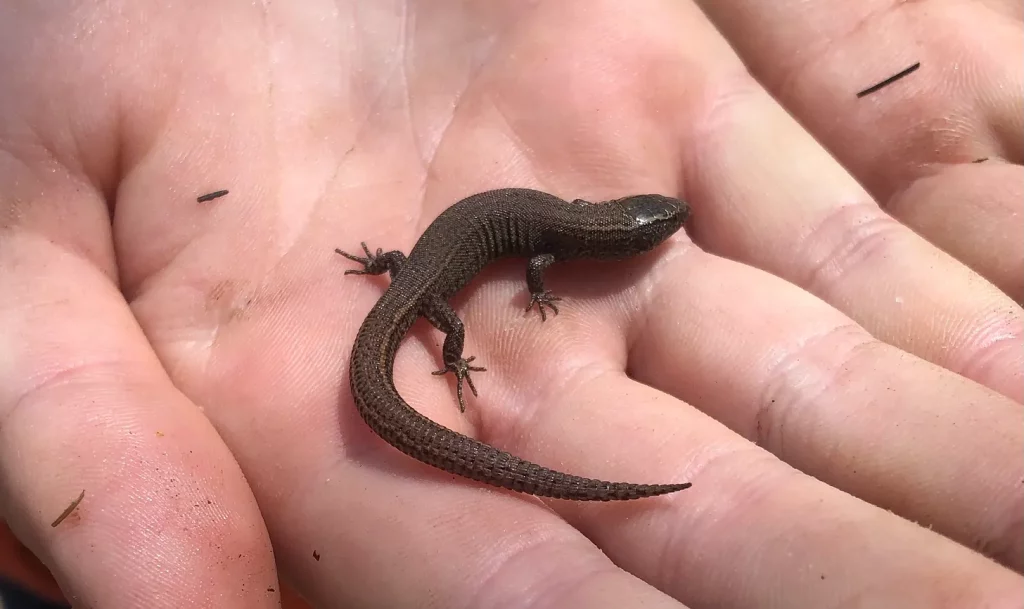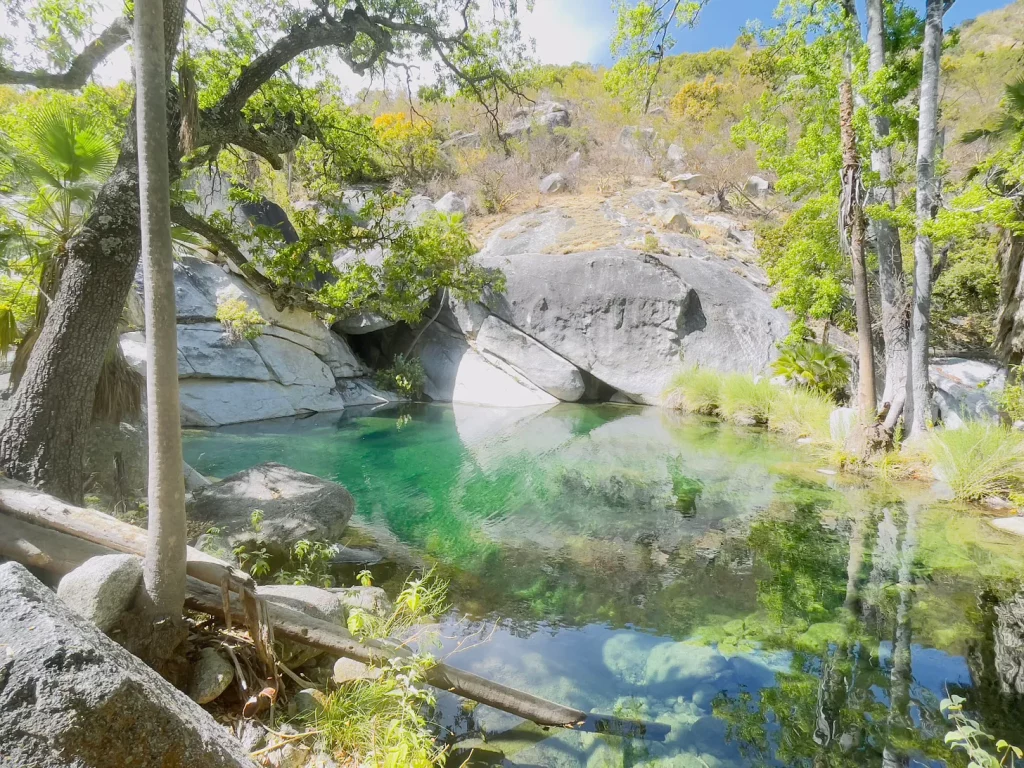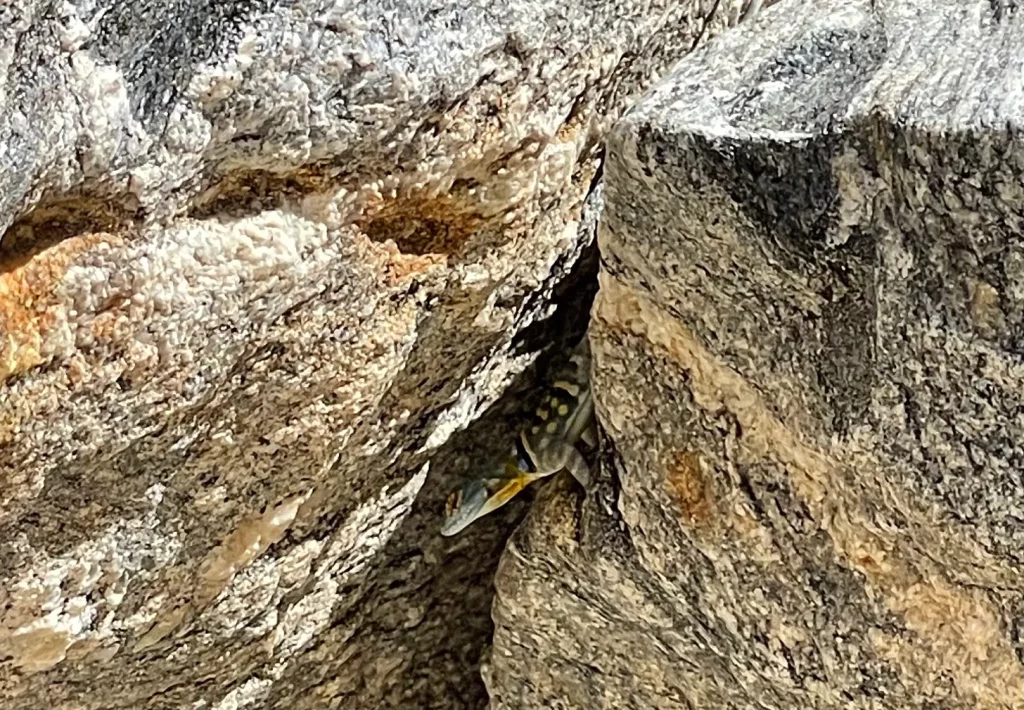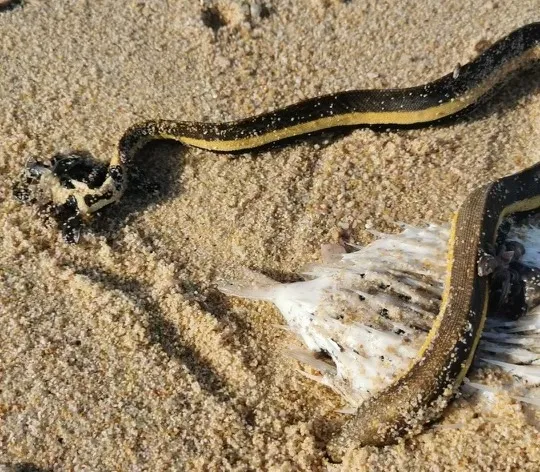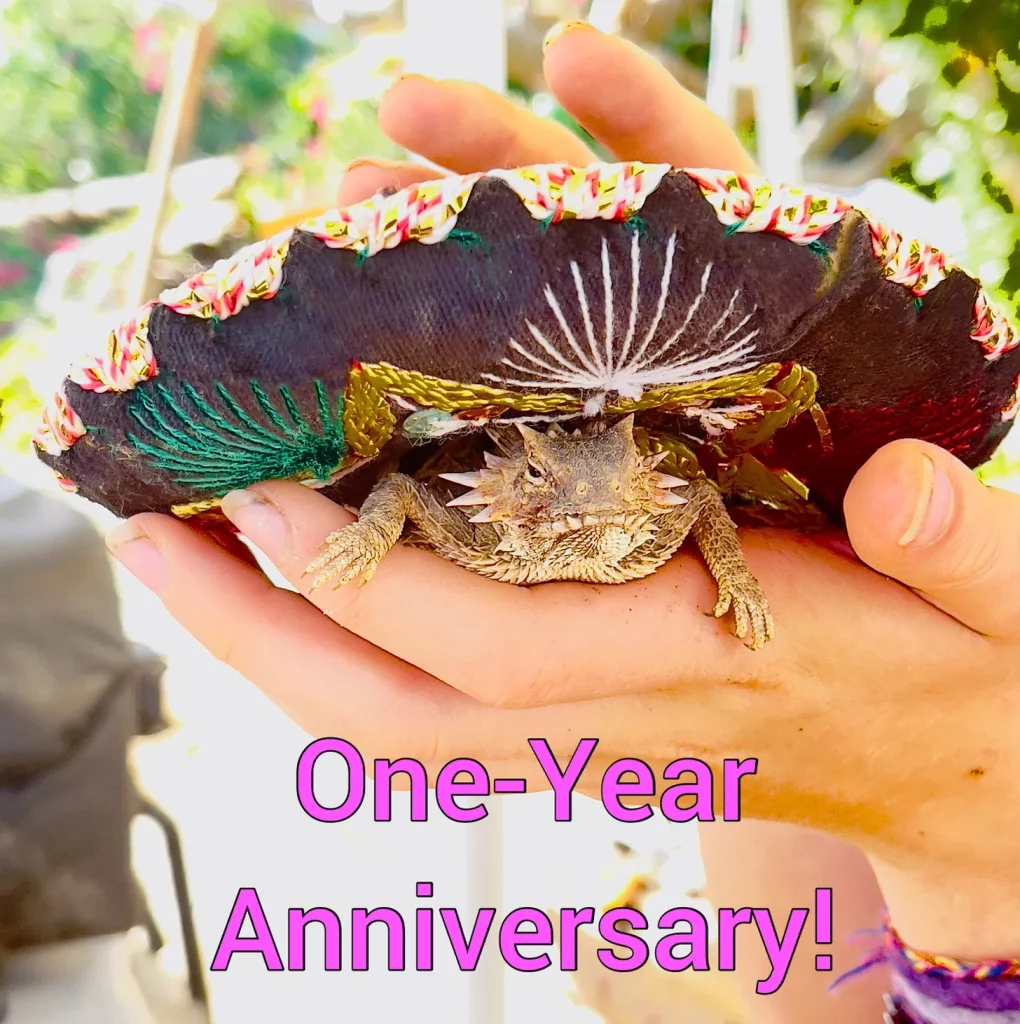
Red Diamond Rattlesnakes (Crotalus ruber) are beautiful, large and amazing snakes. They are quite common right now, crossing roads and paths all over Baja. It is April and the snake season has truly begun!
If you are a mountain biker or runner, or find yourself driving on dirt roads through the desert, you probably have already seen some kind of snake this year. Spring is generally the best time to see snakes, and we are in the middle of it! It is still relatively chilly at night, forcing many of the larger snakes to move around during the day, including rattlesnakes, gopher snakes, rat snakes, king snakes and even rosy boas! Strictly day-active snakes are also common right now, including patch-nosed snakes, whipsnakes and ever-present coachwhips (the big black snakes found all over La Ventana).
Of all of the snakes here, the only dangerous ones are the rattlesnakes. REPEAT: The only dangerous snakes in La Ventana are the rattlesnakes.
We have three species of rattlesnakes in the Cape Region of Baja, but this column is about the Red Diamond Rattler. These gorgeous snakes are quite happy to be left alone and, in many cases, will just slither away. If they feel theatrical, however, they may rear up and rattle their tails. In that case, they will bite if you get too close. Keep in mind that rattlesnakes don’t want to bite you, because venom takes a lot of energy to produce, and they don’t get any benefit from biting you. Their venom is best used for catching mice. Rattlesnakes may move forward a bit when in their coil, but they will practically never chase you. If you just give them their space, then they will eventually stop rattling, and go back to whatever they were doing.
In the extremely rare case that a rattlesnake bites, this is what you should do: STAY CALM and try to call for help, and go to the nearest hospital with anti-venom, as quickly as possible. For La Ventana residents, the closest hospital with anti-venom is in La Paz.
There is confusion and a lot of misleading information about what to do, including sucking out the venom or cutting out the bitten area. Those are very bad ideas, and I would suggest not trying them.
Hopefully this was helpful. Happy Easter! – If you want to talk or walk reptiles, email ChanceStevens123@icloud.com
